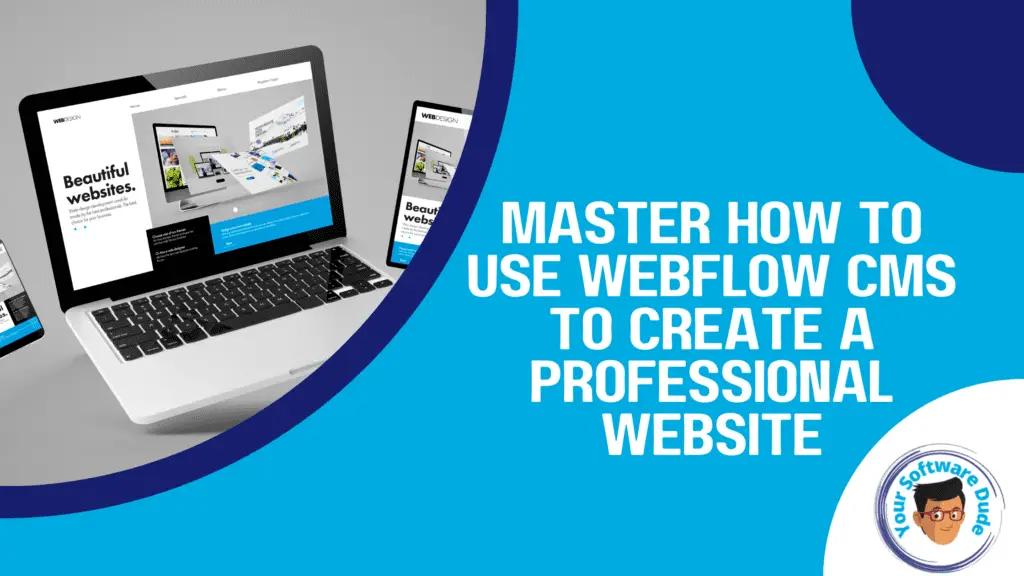How Does Webflow Support Mobile Optimization for SEO?Find out

In today’s digital age, having a mobile-friendly website is no longer a luxury but a necessity. With the majority of internet users browsing the web on their mobile devices, it’s imperative that your website is optimized for mobile devices to ensure a positive user experience and better search engine rankings.
When it comes to building a website with mobile optimization in mind, Webflow is a popular choice for many businesses and website owners.
But the question remains: Does Webflow support mobile optimization for SEO? In this article, we’ll explore the various capabilities of Webflow in supporting mobile optimization for SEO, as well as provide practical tips on achieving a mobile-friendly design using Webflow.
Understanding the Importance of Mobile Optimization for SEO
Mobile optimization is crucial for achieving high rankings in search engine results pages (SERPs) and improving overall user experience.
With the increasing number of users accessing websites through mobile devices, Google has made mobile-friendliness a top priority for search rankings.
In fact, Google’s mobile-first indexing approach prioritizes the mobile version of a website over the desktop version, making it even more important to have a mobile-friendly design.
Additionally, mobile optimization can contribute to higher conversion rates, as users are more likely to engage with and stay on a site that is easy to navigate on their mobile device.
Webflow’s capabilities in mobile optimization for SEO are significant, as the platform offers a range of tools and features that enable users to create responsive and mobile-friendly designs.
By ensuring that your Webflow website is optimized for mobile devices, you can increase your chances of ranking high in SERPs and providing a positive user experience to your visitors.
Webflow’s Capabilities in Mobile Optimization for SEO
Webflow is a powerful platform that offers several features and functionalities to support mobile optimization for SEO.
Whether you are creating a new website or optimizing an existing one, Webflow provides a range of tools to ensure your site is optimized for mobile devices.
One of the main benefits of Webflow is its support for responsive design. With Webflow’s visual editor, you can create flexible layouts that adjust to different screen sizes, ensuring your site looks great on any device. You can customize fonts, images, and other visual elements to ensure they are optimized for mobile viewing.
Another useful feature of Webflow is its ability to help you design mobile-friendly navigation menus.
With Webflow’s interactions and animations, you can create menus that are easy to use on mobile devices and don’t take up too much screen real estate.
This can help improve user experience and increase engagement on your site.
To ensure your site is fully optimized for mobile SEO, Webflow recommends several best practices.
These include optimizing images for faster loading times, using mobile-friendly layouts and font sizes, and ensuring your site is mobile-friendly by using Google’s Mobile-Friendly Test tool.
| Webflow Mobile Optimization Best Practices |
|---|
| Optimize images for faster loading times |
| Use mobile-friendly layouts and font sizes |
| Ensure your site is mobile-friendly using Google’s Mobile-Friendly Test tool |
By following these best practices, you can ensure your site is optimized for mobile SEO and is more likely to rank well in search engine results pages.
Webflow’s Built-In Tools for Mobile Optimization
Webflow provides several built-in tools to help you optimize your site for mobile devices. These include:
- Mobile-first breakpoints
- Mobile-optimized navigation
- Flexbox and CSS grid support for responsive layouts
- Viewport scaling for improved display on high-density screens
By using these tools, you can create mobile-friendly designs that are optimized for both user experience and SEO.
“With Webflow’s visual editor, you can create flexible layouts that adjust to different screen sizes, ensuring your site looks great on any device.”
In addition to these features, Webflow also provides resources and tutorials to help you improve your mobile optimization skills.
The Webflow University offers courses and video tutorials on responsive design, mobile optimization, and other related topics.
This can help you stay up-to-date with the latest best practices and techniques for optimizing your site for mobile SEO.
Overall, Webflow is a powerful platform that offers several features and tools to help you optimize your site for mobile devices and improve your SEO rankings.
By following best practices and utilizing Webflow’s built-in tools, you can create a mobile-friendly site that looks great and performs well in search engine results pages.
Achieving Mobile-Friendly Design with Webflow
After understanding the importance of mobile optimization for SEO, it’s time to put it into practice. Webflow provides users with a variety of tools and features that enable them to create responsive and mobile-friendly designs.
In this section, we will discuss the step-by-step process of achieving a mobile-friendly design with Webflow.
Creating Responsive Layouts
One of the primary aspects of mobile optimization is to ensure that the website design adapts to different screen sizes. Fortunately, Webflow makes this process easy with its built-in responsive design tools. To create a responsive layout in Webflow, follow these steps:
- Select the element that you want to make responsive
- Click on the “Settings” icon
- Under the “Layout” tab, select “Flexbox” as the display property
- Adjust the layout design and positioning for each screen size
By using this process, you can ensure that your website design is optimized for different screen sizes and resolutions.
Adjusting Fonts and Images for Mobile
Another crucial aspect of mobile optimization is to ensure that the fonts and images on the website are optimized for mobile devices.
This means that the font size and image resolution must be adjusted to fit smaller screens. To achieve this with Webflow:
- Select the text or image element that you want to adjust
- Click on the “Settings” icon
- Under the “Typography” or “Image” tab, adjust the font size or image resolution to fit smaller screens
By following this process, you can ensure that your website is easily readable and visually appealing on mobile devices.
Ensuring Smooth Mobile Navigation
Mobile users have a shorter attention span, and their browsing behavior is different from desktop users. Therefore, one of the critical aspects of mobile optimization is to ensure smooth navigation on mobile devices.
In Webflow, you can use the following tools to achieve this:
- Use hamburger menus to save screen space
- Ensure that the menu items are easily clickable on smaller screens
- Use clear and concise headings to guide users through the website
- Use buttons to make call-to-action elements stand out
By implementing these navigation best practices, you can ensure that mobile users have a seamless browsing experience on your website.
Examples of Successful Mobile Optimization with Webflow
Now that we have covered the process of achieving a mobile-friendly design with Webflow, let’s look at some examples of successful mobile optimization using the platform:
| Website | Description |
|---|---|
| https://www.bellroy.com/ | Bellroy’s website is optimized for mobile devices, with responsive design and clear navigation menus that are easily accessible on smaller screens. |
| https://www.framer.com/ | Framer’s website is another example of successful mobile optimization, with a minimalist design and clear call-to-action buttons. |
By following the best practices discussed in this article and taking inspiration from successful examples, you can achieve a mobile-friendly design and optimize your website for mobile SEO with Webflow.
FAQ – Answers to Common Questions about Webflow and Mobile Optimization for SEO
Are Webflow websites compatible with all mobile devices?
Yes, Webflow automatically generates responsive designs for all screen sizes, ensuring compatibility with different mobile devices.
Does mobile optimization impact search engine rankings?
Yes, mobile optimization is a crucial factor in ranking well in search engine results pages (SERPs). Google has stated that mobile-friendly websites are prioritized in their search algorithm.
How can I ensure my Webflow website is mobile-friendly?
Webflow offers built-in tools for mobile optimization, such as responsive design options and settings for adjusting fonts and images for different screen sizes.
Additionally, following Webflow’s recommended best practices for mobile SEO can help ensure a mobile-friendly website.
What are the potential challenges in implementing mobile-friendly design using Webflow?
The main challenge in implementing mobile-friendly design with Webflow is the complexity of creating responsive layouts that work seamlessly on all screen sizes.
However, Webflow’s built-in tools and resources can help simplify the process and ensure a mobile-friendly design.
In summary, Webflow offers robust support for mobile optimization for SEO, with numerous built-in tools and options available for creating responsive and mobile-friendly designs.
By following Webflow’s recommended best practices and utilizing their resources, users can achieve successful mobile optimization and improve their search engine rankings.



















